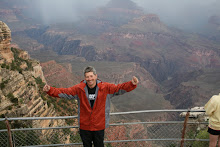
The water route was used by a few Cherokee detachments who boarded boats on the Tennessee, Mississippi, and Arkansas rivers. The route was extremely difficult and impractical due to low water levels.
The three land routes were the Northern, Bell, and Benge routes. The Bell and Benge routes are named after the military commanders who lead the detachments. The Bell route was the shortest route following the most direct line from Chattanooga, TN to Tahlequah, OK. The Benge and Northern Routes followed a northern arc across Kentucky and Missouri. The detachments chose different routes depending on the road conditions, reliable river crossings, and availability of forage.
The Northern route proved to be the most difficult of the 4 paths. The Northern route detachments could not leave Chattanooga until August due to a severe summer draught. Once on the road, they found heavy fall rains had made the roads nearly impassable. The march took more than 7 months to complete.
Only the Northern route can be closely followed by modern roads. My plan is to follow it to Oklahoma as closely as I can. It took the Cherokee 7 months to complete the passage by wagon and foot. I hope to complete the ride in just over 2 days.
View Larger Map
My plan is to divide the ride out across 3 legs. I will need to stop every 100 miles for fuel. Additionally, I plan on stopping at various interest points along the way. The limited range of my bike is the source of most of my current anxiety. My route will avoid major highways for large distances. I will need to keep a constant eye on my fuel consumption.
The first leg will take me 304 miles from my home in Cumming Georgia to Hopkinsville Kentucky. I plan to make at least 3 interest stops on the first leg. I will stop at the Cherokee departure point outside of Chattonooga, the Shelford Baptist Church in McMinnvile to view some Cherokee graves, and if possible, the Hermitage outside of Nashville. In order to accomplish all of this during day light, I plan on leaving my home at 5:30am on Sunday, and hope to arrive in Chattonooga by 8:00am.
The Hermitage was the home of Andrew Jackson. Jackson was a veteran of many battles with the Creek and other indigenous tribes. The Cherokee were an ally of Jackson's during the battle of Horseshoe Bend which was Jackson's most famous victory over the Creek Indians. Despite this, Jackson was a strong advocate for Cherokee removal, and it was during his presidency the removal process was executed. Jackson is reviled in post removal Cherokee culture.
My second leg will take me out of Kentucky, over a small portion of Illinois and across the entire southern half of Missouri through the Ozark mountains. My plan is to spend the night in Springfield Missouri, but this leg will be over 350 miles long. I am concerned I will not to be able to complete it in day light. I don't want to ride at night, so I may need to alter my destination point. I hope to stop at a Trail of Tears park near Cape Girardeau on the Mississippi river.
The last leg will take me down out of Missouri and into Oklahoma. This will be my shortest leg. It will be approximately 170 miles. My plan is to arrive early enough in Tahlequa on Tuesday morning to visit the Cherokee Information and Cultural Center. After that, I intend on moving on to the Tulsa area to begin my research.

No comments:
Post a Comment